When we talk to customers who are interested in learning more about XRF, there are some questions that we answer all the time. Check out some of the most frequently asked questions and their answers below. If you don’t find what you’re looking for, let us know, and we’ll answer your question.
What is XRF?
XRF stands for X-ray fluorescence. It’s a powerful, nondestructive technique for measuring elemental composition.
How does XRF Work?
An analyzer emits X-rays. The X-rays hit the sample and cause the elements in the sample to fluoresce and travel back to an X-ray detector in the analyzer. The analyzer then counts them and does a lot of complicated math to give you a result.
What can you measure with XRF?
You can point an XRF analyzer at almost anything and get a result. Common applications are as a metal scrap sorter, for alloy grade identification, quality control (QC) in metal manufacturing, geological exploration or mining, testing industrial materials like cement or coal, and testing for lead in paint or other contaminants in consumer products.
What can’t you measure with XRF?
The elements that are the lightest on the periodic table (below magnesium—for example, hydrogen, carbon, nitrogen, oxygen, and sodium) have X-rays that are too weak to travel back to the detector and get counted. And XRF just tells you how much of what elements are present—it says nothing about the chemical structure.
Why do people use portable, handheld XRF?
Being able to take a lab technique into the field enables the analysis of samples that are too large, unwieldy, or costly to transport to the lab. On-site analysis enables real-time information and decision-making since labs often have a backlog of samples to test. Often, this speed and availability advantage outweighs the power limitations that come with a portable device.
Is XRF dangerous to use because of radiation?
No, handheld XRF is not dangerous when operated as directed. XRF instruments create X-rays that are ionizing radiation, so you should always minimize your exposure. The basic rule is – like anything pistol-shaped – do not point the gun at anyone and pull the trigger. Handheld XRF power is much lower than imaging X-ray equipment, so XRF users’ exposure is the same as or less than you get from naturally occurring sources.
Is XRF complicated?
Not for the user. We’ve taken care of the details. Once you settle on the right model and the proper calibration for your samples, it’s just “point and shoot” with complete, clear results on the screen. Our user interface navigation is just like a smartphone, so users should feel right at home.
Why are there 6 Vanta™ models?
We offer 6 Vanta models to fit every application and performance level need. And each model has several calibrations for different sample types. Our experts can help you choose the right combination. We can even help you develop your own calibration if you’re an XRF geek (like me).
How long does an XRF test take?
Typical test times range from a second or two for many alloys to up to a minute or two for geological samples. A basic rule of thumb is that lower concentrations take longer. If you’re just interested in bulk composition, then testing takes seconds. If you’re interested in trace concentration (down to single digit parts per million), then longer tests are required.
Do you have any cool accessories?
As any fashion-minded person can tell you, accessories make the outfit, and we offer plenty of them. Check them out below:
Holster—you can wear the holster to hold the “gun” and free up your hands (and your inner cowboy or cowgirl) 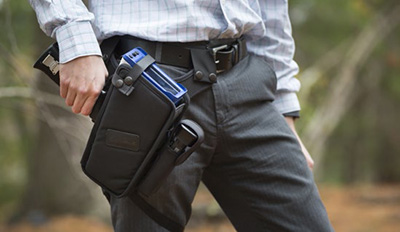 | Soil Foot—holds the instrument while it’s resting on the ground 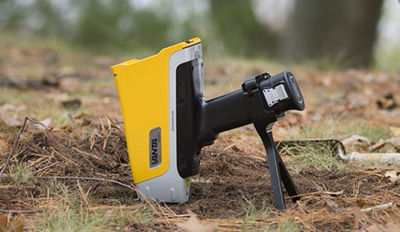 |
Field Stand—a small sample and instrument holder for field operation 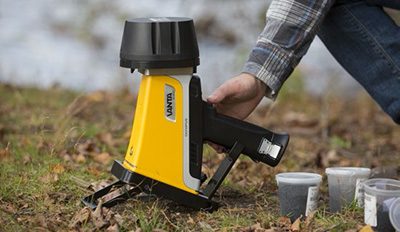 | Work Station—for use in an interlocked (X-rays off when the lid is open) testing environment  |
Docking Station—comes standard with every Vanta analyzer to charge the batteries and hold the analyzer on your desk 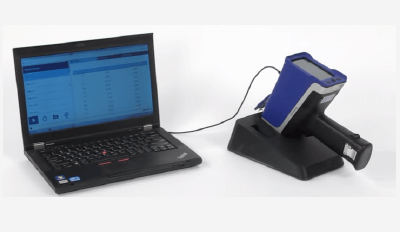 | Hot Heel—enables you to consistently measure hot material (like in-service pipes) 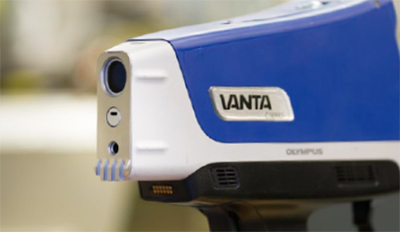 |
Weld Mask—for analyzing weld beads
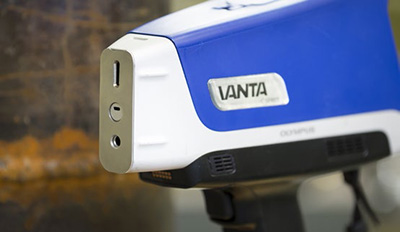
Related Content
Take Note! XRF Data Management Made Easy
Get In Touch

